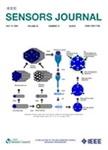版权所有:内蒙古大学图书馆 技术提供:维普资讯• 智图
内蒙古自治区呼和浩特市赛罕区大学西街235号 邮编: 010021

作者机构:Singapore Technol Elect Ltd Singapore 569061 Singapore Nanyang Technol Univ Sch Elect & Elect Engn Singapore 639798 Singapore MIT Dept Mech Engn Cambridge MA 02139 USA
出 版 物:《IEEE SENSORS JOURNAL》 (IEEE Sensors J.)
年 卷 期:2010年第10卷第5期
页 面:960-971页
核心收录:
学科分类:0808[工学-电气工程] 08[工学] 0804[工学-仪器科学与技术] 0702[理学-物理学]
基 金:Singapore National Research Foundation Singapore-MIT Alliance for Research and Technology (SMART) Center for Environmental Sensing and Modeling (CENSAM)
主 题:Millimeter wave RADAR power range spectra autonomous robotics
摘 要:Millimeter Wave (MMW) radars are currently used as range measuring devices in applications such as automotive driving aids (Langer and Jochem, 1996), (Rohling and Mende, 1996), the mapping of mines (Brooker et al., 2005) and autonomous field robotics (Brooker, 2001), (Langer, 1996). This recent interest is largely due to the advantages MMW radars offer over other range measuring sensors, as their performance is less affected by dust, fog, rain or snow and ambient lighting conditions. MMW radars can provide received signal strength values, at all discrete range intervals, within the working range of the radar (Clark and Durrant-Whyte, 1997), (Scheding et al., 2002). The received power versus range spectra hence contain useful range to target information, but are also corrupted by noise. User defined stochastic algorithms can then be implemented, which exploit this rich data to improve object detection and mapping performance. This is in contrast to many other range measuring devices which typically internally threshold received signals, to provide single hard decisions only, on the estimated range to objects (Mullane, 2007). This paper addresses the issues of predicting the power-range spectra from MMW radars which use the Frequency Modulated Continuous Wave (FMCW) range estimation technique. This is important for two reasons. First, in automotive and autonomous robotic applications, such sensors are used in conjunction with vehicle navigation and map state estimation filters. This is so that (typically uncertain) vehicle motion knowledge can be optimally fused with the noisy sensor information, to infer estimates of the state of interest (typically, the vehicle s pose (position and orientation) and/or information of the surrounding object locations). Hence, it is essential that predicted power versus range spectra can be computed, to apply a Bayesian recursive estimation framework, based on previous measurements, and uncertain vehicle motion information. Second, it